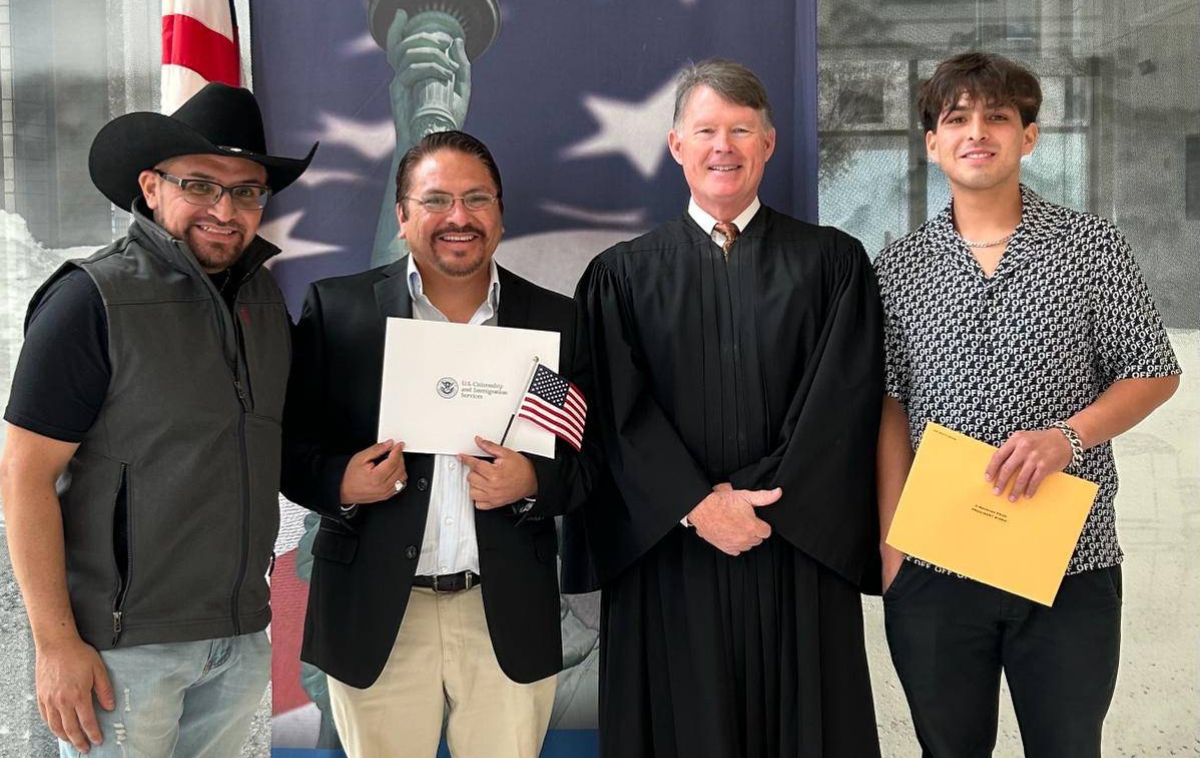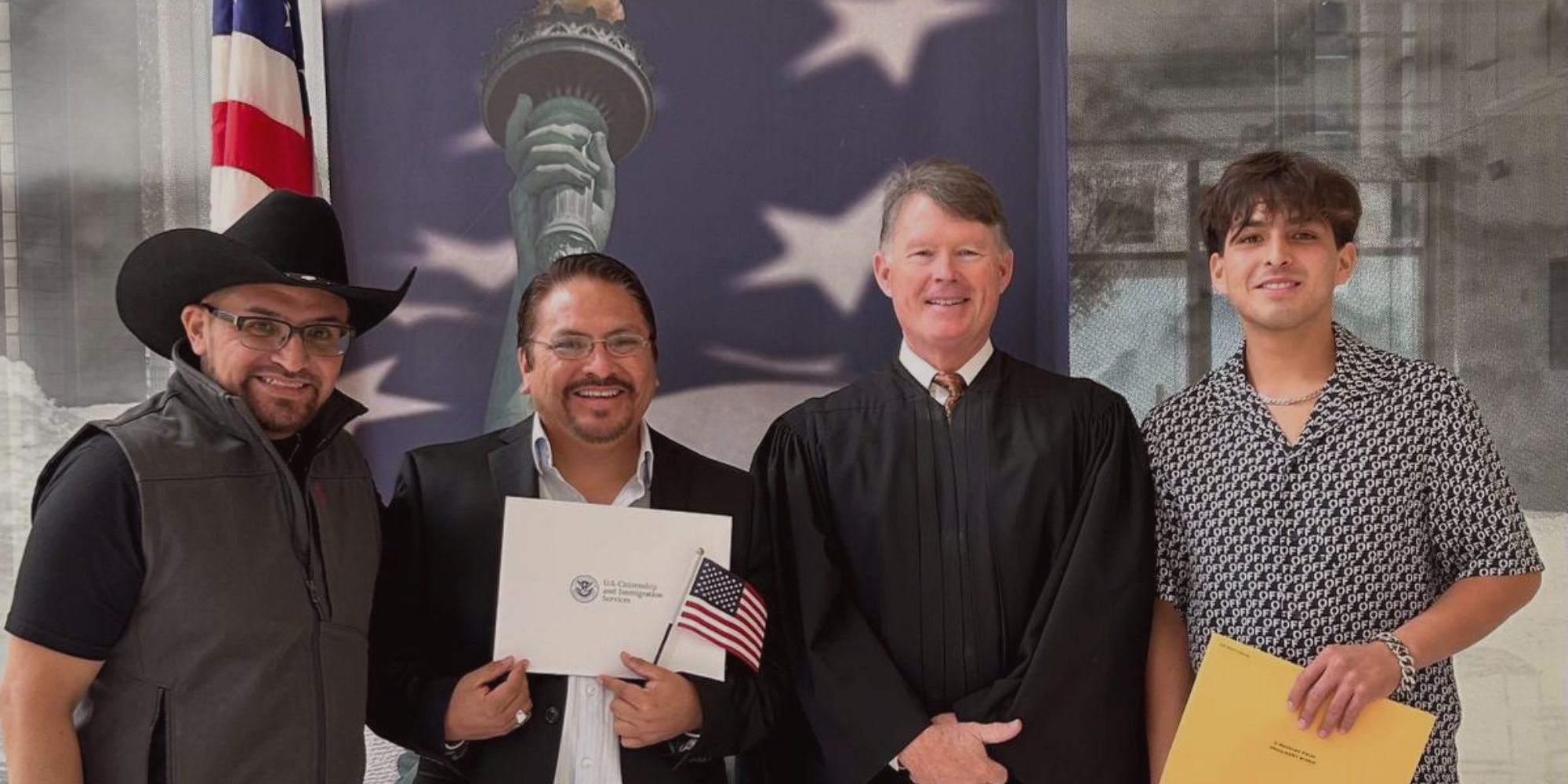American, Franciscan dreams come to fruition for Br. Jorge Hernandez
Date Published: March 19, 2024
By Eli Pacheco
Br. Jorge Hernandez Jurado's journey to his American and Franciscan dreams unfolded across two nations and what felt like one-and-a-half lifetimes. Time stood still in many delays that tried Jorge’s faith.
As of last month, his dream of becoming an American became a reality.
After enduring prolonged processes and an immigration gauntlet, Br. Jorge became a United States citizen in February, realizing the second of the most meaningful dreams of his life.
The first? To become a Franciscan friar.
“I had lost my hope to come back to the U.S.,” Br. Jorge said as he remembered the setbacks that have marked his journey. “I did not think this was happening.”
Franciscan from the start
Br. Jorge’s hometown of Acámbaro lies on the banks of the Lerma River and in the annals of Franciscan history.
Founded in 1526 as San Francisco de Acámbaro, this city of 100,000 today still boasts structures Franciscan friars built more than 400 years ago, such as Templo de Hospital. Franciscan influences surrounded Br. Jorge and spurred him to dream of becoming a priest as a child.
In his 30s, he decided to pursue a religious life, but found that he had exceeded the age limit for postulants in Mexico. He applied to the legacy Our Lady of Guadalupe Province in New Mexico, and his quest to pursue his dream in America began.
Br. Charlie Martinez, OFM, the vocations director in Albuquerque, met with Br. Jorge in Mexico for interviews. It took a year for Br. Jorge to apply for entry into the postulancy program and obtain a religious visa.
Br. Jorge spent his first year as a postulant in San Antonio, learning English with other candidates. He renewed his visa annually. Everything seemed on track ... until immigration rules changed.
Waiting in Mexico
As lawyers worked for Br. Jorge and others on new guidelines, Br. Jorge returned to Mexico for what he imagined would be a short wait. After six months, he wrote a letter to the province, all but conceding defeat.
A year after his return to Mexico, Br. Charlie called. “I have your papers,” he told Br. Jorge. “Want to try again?”
After thought and prayer, Br. Jorge said yes. Five years of religious life in the U.S. followed, and he received his green card in 2014. Br. Jorge was a permanent United States resident, but not a citizen.
A pandemic and family death would again force his dream of becoming an American citizen into limbo.
Covid-19 struck the world as Br. Jorge attempted his first shot at American citizenship. “Everything was stuck and closed,” he remembers. Then, his mother passed away. Swept off his path, Br. Jorge felt his dreams stall.
Still able to work because of his green card, he saw 2021 pass, then 2022. “I did not try” to attain citizen status, he said. He spent a year in San Antonio, then El Paso, to run a large parish. The work kept him busy, and his dream at bay.
More moves followed, from San Antonio, to running a parish in San Juan Capistrano, California. He found stability there, and a renewed will to pursue his citizenship.

Br. Jorge Hernandez, second from left, with his brother, his nephew, and the judge that oversaw the naturalization ceremony. (Photo courtesy of Br. Jorge)
‘I can serve more deeply’
How well do you know U.S. history, its geography, and policies?
To become a citizen, one must study a list of 100 questions on these subjects. For the test, they are asked 10. According to the U.S. Citizenship and Immigration Services, 878,500 new citizens became naturalized in ceremonies worldwide.
The number of naturalizations, as they are called, has increased in the past few years. Twenty-four percent of naturalizations in the past decade happened in 2022 and 2023.
Br. Jorge joined them when his letter finally arrived.
“It is an honor for me to become an American,” Br. Jorge said. “I can serve in my province more deeply, especially now that we are one province.”
Br. Jorge’s ceremony took place in Austin, Texas, in February. His friar brothers could not attend, but his brother, Andres Hernandez, and his nephew could. Fifty-one candidates from 27 nations, including eight Mexicans, were naturalized.
His friary held a party to commemorate, inviting friends and parishioners.
Br. Jorge will celebrate 12 years as a Franciscan friar in June. His life has taken him from Burlington, Wisconsin, to Roswell, New Mexico.
“This is my second family, the Franciscan friars of the U.S.,” he said. “Thank God and the province for the opportunity.”
His lifelong pursuit has finally come to fruition. It harkens Br. Jorge back to meeting Franciscans near his hometown when he was 9 years old.
“I fell in love with the charism,” he said. “I read about St. Francis, and it made a big first impression. I grew up in that charism. Now, I am so happy to become Franciscan, living in the vows, and to wear the habit as a friar.”

